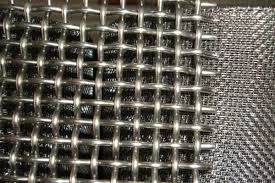-
+86 15030157877
-
sales@galvanizedmetalmesh.com
Th9 . 24, 2024 17:36 Back to list
Hog Wire Manufacturing Plant for Quality Fencing Solutions and Agricultural Applications
The Intricacies of Hog Wire Factory Production
The hog wire factory plays a crucial role in the manufacturing of various kinds of wire products that are fundamental to agricultural and construction industries. Primarily known for producing hog wire— a term that refers to a type of fencing material made with welded steel wire— the factory caters to the needs of farmers, ranchers, and builders who require durable and reliable fencing solutions.
At its core, the production process in a hog wire factory begins with the selection of high-quality raw materials. Steel wires, usually galvanized to prevent rusting and corrosion, serve as the main component. This galvanization process involves coating the steel wire with a layer of zinc, enhancing its longevity, especially when exposed to outdoor elements. Ensuring high standards at the raw material stage is crucial as it directly impacts the quality and durability of the finished product.
The manufacturing process begins with the unwinding of these steel wires from large coils. The factory is equipped with specialized machinery that cuts the wire into the desired lengths according to customer specifications. After cutting, the wires are organized and arranged into grids before being welded together. Welding in hog wire production is generally accomplished using automatic welding machines, which ensure uniformity and strength in the final fencing panels.
Quality control is an essential aspect of production. Each hog wire panel undergoes rigorous testing to ensure it meets the specified standards before being packaged and shipped. This includes checks for tensile strength, weld quality, and dimensional accuracy. Quality assurance ensures that the hog wire can withstand the stresses of its intended environment, whether it is meant to contain livestock or serve as a protective barrier in construction.
hog wire factory

Following the quality checks, the finished panels are treated to further enhance their durability. In some cases, additional coatings or treatments may be applied to improve the panels' resistance to weather and other environmental factors. Once adequately treated, the panels are then packaged for distribution, catering to various markets, both local and international.
In recent years, the hog wire factory has also embraced technological advancements aimed at improving efficiency and sustainability. Modern factories are now integrating automated systems that optimize production workflows, minimize waste, and enhance resource management. Such innovations not only boost productivity but also contribute to more environmentally friendly manufacturing processes.
Another trend in the hog wire industry is the growing demand for customization. Customers today are looking for unique fencing solutions tailored to their specific needs. As a result, many hog wire factories are investing in flexible manufacturing systems that allow for more variety in product offerings, including different wire gauges, heights, and mesh configurations.
In conclusion, the hog wire factory is a vital component of the agricultural and construction supply chain. Through a combination of traditional craftsmanship and modern technology, these factories deliver strong, durable, and customizable fencing solutions. As the demand for quality fencing continues to grow, hog wire factories will undoubtedly play a pivotal role in meeting these needs while helping to shape the future of agricultural and construction practices. The ongoing commitment to quality, efficiency, and sustainability will ensure that these facilities remain at the forefront of their industry.
-
Hexagonal Gabion for River Bank Protection and Retaining Walls
NewsJul.23,2025
-
Chain Link Fence-HEBEI WEICHUN WIRE MESH TRADE CO.,LTD.|durable fencing solutions&secure perimeter protection
NewsJul.23,2025
-
High Quality Stainless Steel Wire Mesh Roll & Supplier Wholesale Price
NewsJul.22,2025
-
Hexagonal Gabion Mesh: Durable Stone Cages for Landscaping
NewsJul.22,2025
-
Premium Black Brick Welded Mesh - High Strength & Corrosion Resistant
NewsJul.21,2025
-
High-Quality Chicken Wire Panels Leading Manufacturer & Exporter
NewsJul.08,2025



